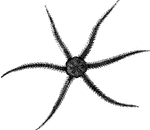Clipart tagged: ‘radiata’
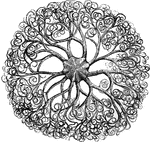
Shetland argus
"The Shetland Argus, Astrophyton scutatum, usually more than a foot across, is sometimes found on…
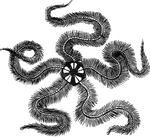
Common brittle-star
Among the several species of Brittle-Star found in the British seas is the Common Brittle-Star, Ophicoma…
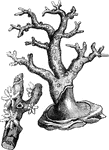
Red coral
"It appears to be confined to the Mediterranean Sea, where it grows, especially on the southern coast,…
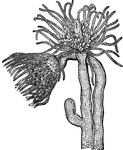
Tubularia coronata
"The Tubularidae are a family of hydroid polypes are for the most part social animals, frequently possessing…
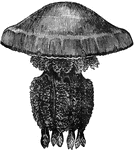
Rhizostoma cuvieri
"The Rhisostoma Cuvieri, a British species, measures two feet, or ever more, in diameter, while…

Alcyonium elegans
"In the genus Alcyonium, the polypidom is of a spongy nature, and contains a multitude of minute calcareous…
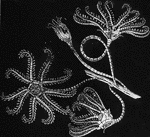
Encrindae
"Theses animals were all supported upon a long stalk, at the extremity of which they floated in the…
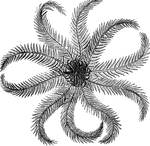
Rosy feather-star
"The body is flattened and covered with several cacareous plates; the lower, or entral surface, bears…

The Digestive Apparatus of a Hydra or Freshwater Polyp
In Radiata the digestive cavity is a pouch with a single opening, into which the food is passed and…
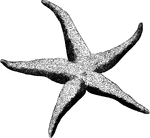
Five-fingered jack
"In this family the arms appear to be merely prolongations of the disc; they are suaully five in number,…

Medusa's head pentacrinus
"This may be considered as one of the greatest wonders of nature, it being a real animal, having blood,…
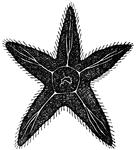
Diagram of a Radiata
In the Radiata, the starfish manifests one of the simplest forms of nervous systems. it consists of…

Angular sea-cucumber
"The Angular Sea-Cucumber, C. pentactes, is also a European species, with double rows of warty…

Common sea-cucumber
"Sea-Cucumbers are of various forms, some of the species being found in nearly all seas. They…
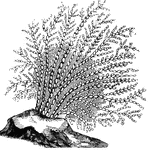
Sea-fan
"In the family of the Gorgonidae the substance of the polypidom is collected into a solid central axis,…

Sea-pen
"The main stem of the polypidom of these animals is fleshy, but is furnished with an internal bony axis,…

Common European sea-star
"The colors in this are variable but brilliant - red, purple, green, and white. It measures from nine…

Sea-urchin without spines
"The globular crest of this animal is made up of several hundred polygonal pieces of different sizes,…

Diagram of a Starfish
A diagram of a radiata (the starfish) whose organization is much less complete than that of most other…
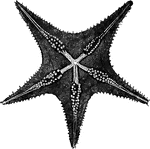
Underside of a starfish
"The organs of motion are similar, consisting of a multitude of small feet called ambulacra,…

